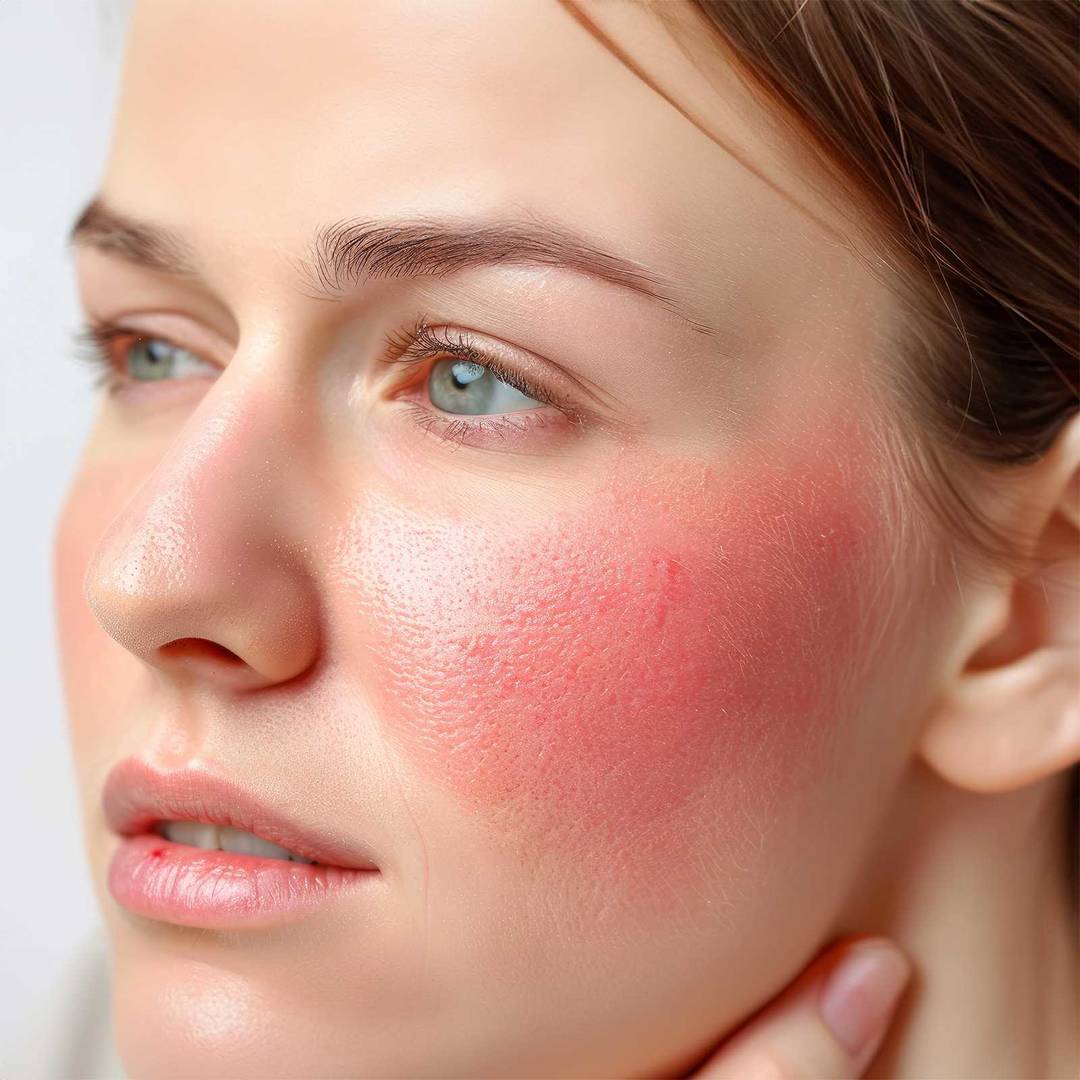Characteristics of Phototoxicity and Photoallergy of skin reactions
The interaction between chemical substances and the sunlight can trigger skin adverse reactions, such as irritations (phototoxicity) and allergic processes (photoallergy).

These reactions are of particular importance in the development of cosmetics and personal care products, in which safety is fundamental. Check below the definition of concepts and the importance of the clinical tests provided by ALS:
Phototoxicity
Phototoxicity is a non-immune response that occurs when a chemical in a product that is present in the skin is activated by the ultraviolet light (UV), resulting in cellular damages. This type of reaction usually is fast and occurs after a single exposure.
Characteristics:
- Time of Reaction: It manifests within minutes to hours after exposure to UV light.
- Symptoms: Erythema (redness), edema (swelling), burning sensation, hyperpigmentation (response after irritative process) and, in severe conditions, blisters formation.
- Cause: Exposure to photosensitizers chemical substances present in medication, cosmetics or plants, followed by UV light exposure.
Common Examples:
- Psoralen in Plants: Psoralens, found in plants such as bergamot, are known to cause phototoxicity. When the skin gets in contact with these plants and is exposed to sunlight, a severe phototoxicity reaction may occur.
- Medication: Antibiotics such as tetracycline and sulfonamides, when ingested, can cause phototoxicity. The skin treated with these medications and exposed to sunlight may present erythema and bullae.
Mechanic:
The chemical substance absorbs UV light getting into an excited energy state. This energy can transfer to the molecular oxygen, forming reactive oxygen species (ROS) that damage the skin cells.
Photoallergy
Photoallergy is a hypersensitivity reaction mediated by the immune system. It occurs when a chemical substance changes its structure when exposed to UV light, becoming antigenic and triggering an immune response. This type of allergic response appears after a few days that the skin had contact with solar radiation exposure and need to have had contact with the same substance before. These responses may manifest in skin areas that were not exposed to this kind of radiation.
Photoallergy Characteristics:
- Time of Reaction: It may take from 24 to 72 hours after UV light exposure.
- Symptoms: Dermatitis (skin inflammation), pruritus (intense itching), skin rashes and, in severe cases, eczema.
- Cause: Exposure to photoallergenic chemical substances, followed by UV light exposure, resulting in an immune response.
Common Examples:
- Fragrances and Preservatives: Ingredients such as synthetic musks and preservatives such as formaldehyde can cause photoallergy when skin treated with products containing these ingredients is exposed to the sun.
- UV Filters: Some chemical sunscreens, such as oxybenzone, can be photoallergenic.
Mechanic:
The chemical substance, when exposed to UV light, undergoes a photochemical transformation, becoming antigenic. The immune system recognizes this new antigen and mounts a response, resulting in photoallergic dermatitis.
Clinical Tests Importance
The performance of clinical tests of Phototoxicity and Photoallergy is essential during the development of cosmetic products to ensure the safety of consumers. These tests are conducted in multiple phases, from in vitro studies to clinical studies in humans.
Phototoxicity Tests:
- In Vitro: Use of cellular models, such as human fibroblasts, to assess the cytotoxicity induced by UV light after exposure to the test substance.
- In Vivo: Studies in animals (usually rats) to assess the skin response after topical application of the substance followed by the UV light exposure.
- Clinical Studies in Humans: Performed in volunteers to observe the skin reaction after product application and subsequent controlled sunlight exposure.
Photoallergy Tests:
- Modified Patch Test: Application of the substance in small areas of the skin followed by UV light exposure. The area is observed for allergic dermatitis signs.
- Clinical Studies in Humans: Assessment of the immune response in volunteers after repeated exposure to the substance and UV light to identify photoallergic reactions.
Examples of Clinical Studies:
- Phototoxicity Study of Cosmetics Containing Retinoid
- Investigation of Photoallergy with UV Filters
- Phototoxicity Study with Perfumes Containing Coumarin
- Photoallergy Investigation with Antiseptics Containing Chlorhexidine
- Assessment of Phototoxicity in Anti-aging Creams with Glycolic Acid
Conclusion
Deep understanding of phototoxicity and photoallergy reactions is crucial for the safe development of cosmetic products. Rigorous phototoxicity and photoallergy tests are essential to identify and mitigate risks, ensuring that products do not cause harm to consumers. Clinical tests companies, such as ALS, play a vital role in conducting detailed laboratory analysis, ensuring that products are safe to use. Skin safety is a key pillar in the cosmetics industry, and implementing rigorous testing practices is essential to protect consumers' health and ensure confidence in the products offered.
Ensure the safety of your personal hygiene, perfumery or cosmetics products in development. The studies conducted at ALS allow that the products assessed receive the dermatologically tested claim, the analysis are always followed by a dermatologist and each study project has the signature of the dermatologist in reports issued.
Contact ALS: negocios.bpc@alsglobal.com





















































